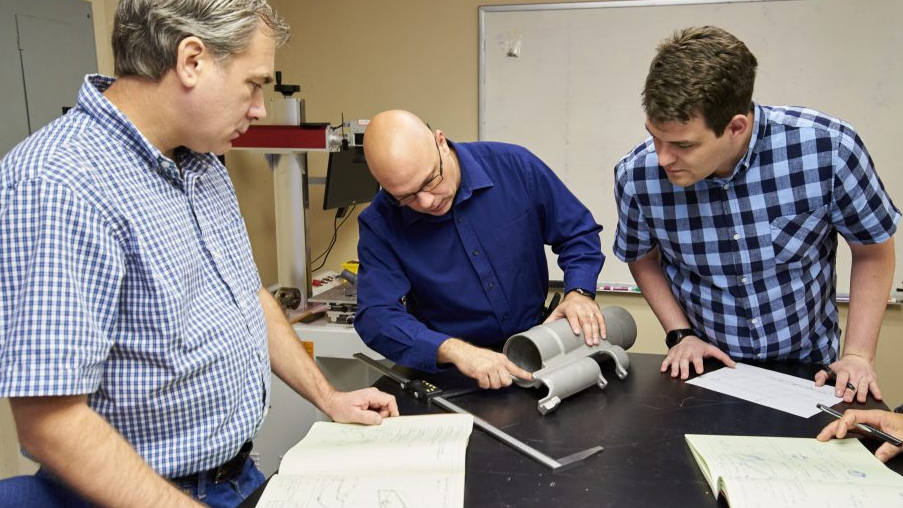Are you considering a patent for a product you’re developing? Polyhistor collaborates with many product developers to optimize patent-worthy concepts and creations, from prototype to production.
From our unique vantage as custom manufacturing experts, we’ve watched countless product developers suffer the fallout of a poor patent strategy—or none at all! Before you push your next product to market, consider our product patenting tips.
Your Patent FAQs: Answered

First, let’s get this quick disclaimer out of the way: Polyhistor’s team is deeply familiar with the ins and outs of product development, including the patent process. However, we are not attorneys. Always consult an actual attorney before making any legal decisions.
Here’s what we’ve learned during our 20+ years spent transforming ideas into tangible products:
1. “Do I need an NDA?”
Non-disclosure agreements are an absolute must-have for any product developer. It doesn’t matter if you’ve invented a time machine or an incredible new way to slice bread; you should never reveal any details about your product without a binding NDA in place.
Most companies have a standard NDA available—particularly businesses offering product development services. You can also find plenty of free NDA templates online or ask your attorney to draft one specifically for your project.
2. “Should I hire a patent attorney?”
If you plan to seek a patent for your product, you will certainly need to consult with a patent attorney at some point. Even if you aren’t considering a patent, you should still hire a patent attorney to conduct a patent search for you.
These are a few of the important questions that a patent search can resolve:
- Is your product truly “novel” and, therefore, patentable?
- Will your product infringe on another existing patent?
- Does “prior art” exist in the public domain that would render your product unpatentable?
- Are there gaps in your current product design that you could address?
Just because you haven’t seen your product in the marketplace doesn’t mean the idea hasn’t been patented. There are many patents in the world for products that simply haven’t been produced yet.
3. “Can’t I file my own patent?”
The short answer is: Yes, you can apply for a patent yourself. However, our customers who file through a registered patent officer or attorney enjoy a more seamless patent process than those who try to handle the application themselves.
Obtaining a patent is an expensive, often lengthy endeavor, and the slightest mistake can force you back to the drawing board. By securing a patent professional, you won’t have to worry about unnecessary delays or costly errors.
4. “Do I really need a patent?”
Many successful products have not been patented, so don’t feel that a patent is the only way to get your idea to market. A conversation with a patent attorney can help you determine whether to pursue a patent for your invention.
5. “How can I make my patent application stronger?”
A product developer can help you build out alternative and additional solutions that may make your patent stronger. Even if you’re already a product developer yourself, you may benefit from collaborating with other product development services experts to help you identify any opportunities you’ve overlooked.
6. “What kind of patent do I need?”
There are two types of patents typically sought by our manufacturing customers:
- Utility patents
- Design patents
(The third type of patent is called a “plant patent,” and it’s specifically for the discovery or invention of new plant varieties.)
Utility patents are the most common, comprising more than 90% of all patents granted by the United States Patent and Trademark Office (USPTO). Your product may qualify for a utility patent if the USPTO deems it new and useful. Our customers commonly obtain utility patents for machines or “articles of manufacture”—a fancy way of saying “handmade or machine-made items.” Utility patents also cover inventions such as pharmaceuticals, business processes, and software.
Design patents are, in essence, appearance patents. According to the USPTO, you would only seek a design patent if your creation is a “surface ornamentation” that is “inseparable from the article to which it is applied and cannot exist alone.” Two examples of design patents are the original Coca-Cola bottle and the Statue of Liberty.
7. “Will a patent keep the copycats away?”
Patents provide excellent protection, but they aren’t fail-safe. For example, if you patent your product in the US but do not obtain an international patent, someone in another country can copy your product and sell it anywhere the item is not patented.
A patent will not eliminate your competition, either. There will always be people doing their best to legally duplicate the latest top-selling products.
Your best bet is to stay laser-focused on your go-to-market strategy. With a new and useful product in hand and a patent to protect outright infringement, your top two priorities are to:
- Produce a product customers will love
- Craft a go-to-market strategy that gets your product sold
Get Your Product Patent-Ready with Polyhistor
Great ideas don’t turn into great products by accident. They’re made through careful consideration of form, fit, and function as well as cost, color, shape, feel, and texture.
At Polyhistor, we maintain the latest software, use the industry’s best practices, rely on proven methodologies, and employ cutting-edge technology to ensure your product is future-proof and scalable. Reach out to learn more about Polyhistor’s product development services, including concept development, product testing, market introduction, and cost management.
And, of course, don’t forget to talk to your attorney about the best way to protect your big idea!
